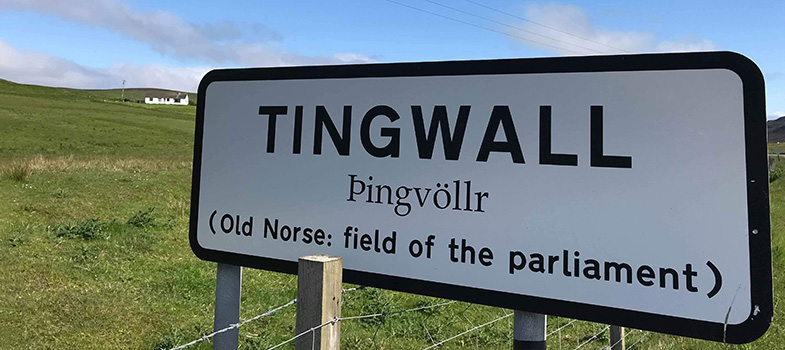3.4 Contemporary developments within Education Scotland
During 2014, Education Scotland appointed four ‘Scots Language Coordinators’ to work with Scottish local authorities and other partners to develop capacity in Scots language education. The team of co-ordinators worked over a period of twenty-three months, developing a range of approaches to the promotion of Scots as an educational and motivational classroom tool.
Scots language ties in well with the Scottish Government’s 1+2 Languages Policy for Modern Languages. Although Scots cannot be taught in exactly the same way as the modern European languages are, it nevertheless provides a very useful way into learning about vocabulary, linguistic difference, links with other Nordic or Germanic languages, or attitudes towards language. As such, Scots is increasingly being used in the primary sector as part of the drive to focus more closely on languages.
The coordinators set up ‘Scots Language Ambassadors’, a scheme where Scots language experts and speakers from a range of backgrounds visited schools in order to talk in and about Scots. In-service training was provided for hundreds of professionals in the area of Scots language education.
A Curriculum for Excellence Briefing Paper was published, describing in detail the benefits of using Scots in the classroom. Scots language resources were created and publicised – which can be viewed on Education Scotland’s National Improvement Hub (search for “Scots language”).
At the same time, as these initiatives have been going on, the Scottish Government has launched a historic new Scots Language Policy, with the aims of promoting and preserving Scots. The Scottish Government’s Scots Language Policy applies to bodies like Education Scotland, Creative Scotland, and the National Library of Scotland.
Also in 2015, a residency was created for the first ever ‘Scots Scriever’ (Scots Prose Writer) at the National Library of Scotland; the first writer to hold the position was Hamish MacDonald. The Scriever’s role is to promote Scots, to promote the Scots materials held in the archives of the National Library, and to create new Scots prose.
The Scottish Qualifications Authority has also made moves to recognise Scots formally, developing a new Scots Language Award. This award has been available through centres since 2015, and allows candidates to gain SCQF accreditation for their learning in Scots. The units are ‘History and Development’ of Scots, and ‘Understanding and Communicating’ in Scots.
The existence of an Award in Scots language, provided, accredited and verified by the Scottish Qualifications Authority, is a major step forward for Scots, and has already begun to contribute to improvements in the status of the language. If young people in Scotland are now able to gain official accreditation for their learning in Scots from our national awards body, this surely speaks volumes about changes in attitudes towards Scots.
It is difficult to predict what the future might hold for Scots within Scottish education. Many of the youngsters currently being targeted by the National Improvement Framework or Closing the Gap initiatives will be from Scots speaking families in Scotland’s poorer areas - such is the sociolinguistic division in Scotland. It seems clear that using Scots materials in the classroom will help to engage these youngsters and develop their literacy skills.
And some of Scotland’s more rural areas reported the highest usage of Scots language in the 2011 Census, with upwards of 40% of respondents in certain rural Local Authority areas such as Moray, Aberdeenshire, Orkney or Shetland reporting that they use or understand Scots language. It stands to reason that teachers in these areas especially ought to be capitalising on the enthusiasm that young people and their parents have for the Scots of these communities.
The young people of the twenty first century are subject to a greater range of linguistic influence than ever before. The language of their community or family vies with the language being used by their peers across the world, listenable via the internet. Other media also play a role. And while Gaelic is well represented in the contemporary media, Scots is almost completely absent; so it might be argued that investment in Scots education (and the arts or museums services) can only achieve limited success on its own without a corresponding push in the area of the broadcast media.
Notwithstanding these reservations, it can be said that Scots language has survived into the twenty first century with no official support, and its growing presence in modern Scottish classrooms, and the backing it is now enjoying from the Scottish Government and Education Scotland is cause for both wonder and celebration.
3.3 Scottish curricula: language and literature
